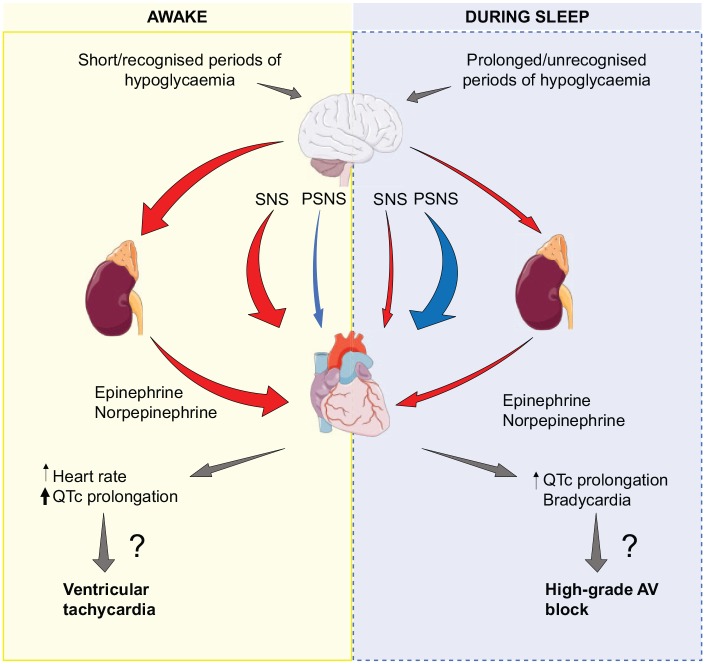Figure 2.
Proposed mechanism for hypoglycaemia-induced cardiac arrhythmias. Sympathoadrenal activity and parasympathetic activity is depicted with red arrows and blue arrows, respectively. When awake, a marked increase in catecholamines during episodes of hypoglycaemia results in an increase in heart rate and QTc, which is a well-stablished risk factor of ventricular arrhythmias. At night, the sympathoadrenal response is blunted and QTc prolongations less pronounced. The initial sympathoadrenal response is followed by increased vagal activity resulting in bradycardia. Preclinical studies have indicated that bradycardia may be the initial step leading to high-grade AV-block and cardiac arrest during severe hypoglycaemia.
AV block, atrioventricular block; PSNS, parasympathetic nervous system; QTc, corrected QT interval; SNS, sympathetic nervous system.

